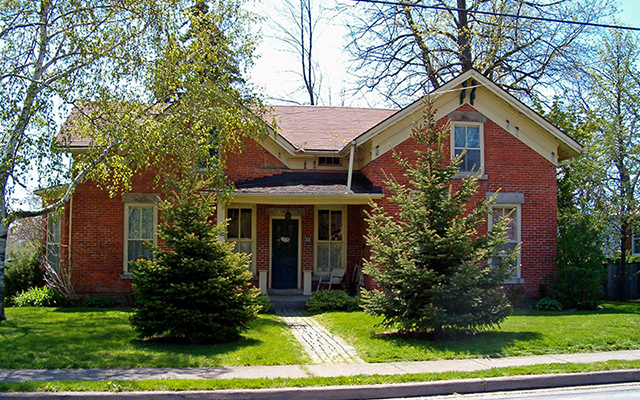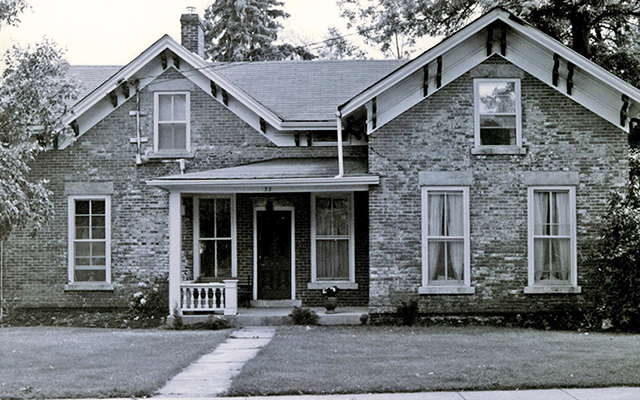Hooker House
Thaddeus W. Hooker and his wife, Susan Malvina Seaman, arrived in Welland in February 1855. Hooker constructed a brickyard, and between 1855 and 1912, many of the brick buildings in Welland were constructed with Hooker bricks.
The Hooker house was built in several phases. It was based on the Ontario House, a small, one-and-a-half-storey farmhouse with a low front gable in the eave of the upper storey.
In April 1856, Hooker purchased a lot from William Bald, and the north section of the east wing was built. Hooker bought the adjoining lot the following year, which permitted the addition of the west wing. These sections of the house exhibit characteristics of the Ontario House style. The exterior doors have straight, heavy stone lintels, and the windows bear concrete sills.
The third section, the south portion of the east wing, was likely constructed in the 1860s. It was built in the Italianate style, as indicated by the elliptical window headings with brick voussoirs. In addition, the Italianate brackets under the eaves of the entire home were probably added at this time.
Contact
- Heritage Advisory Committee
- Civic Square,
60 East Main St., Welland, ON L3B 3X4 - info@wellandheritage.ca

